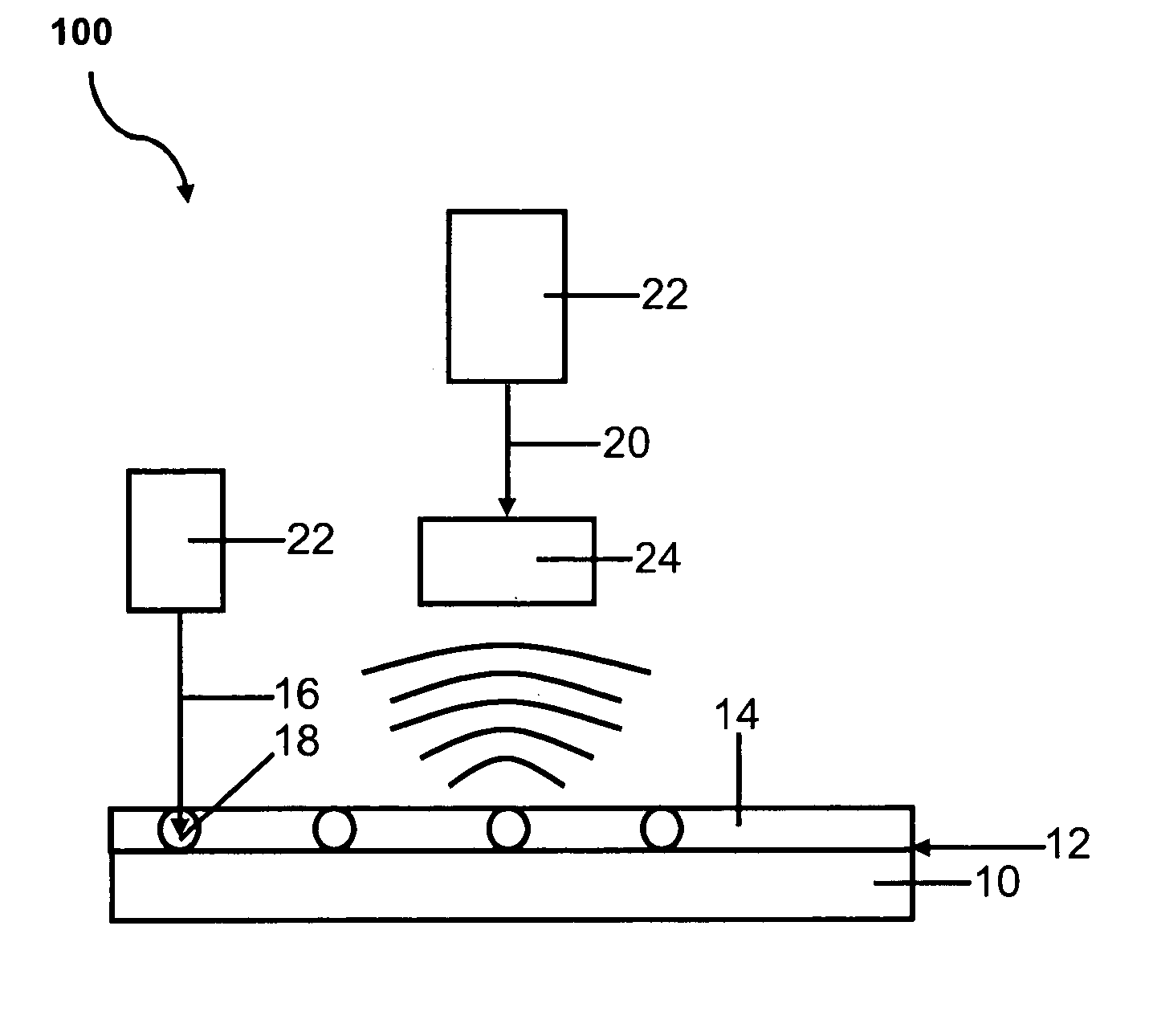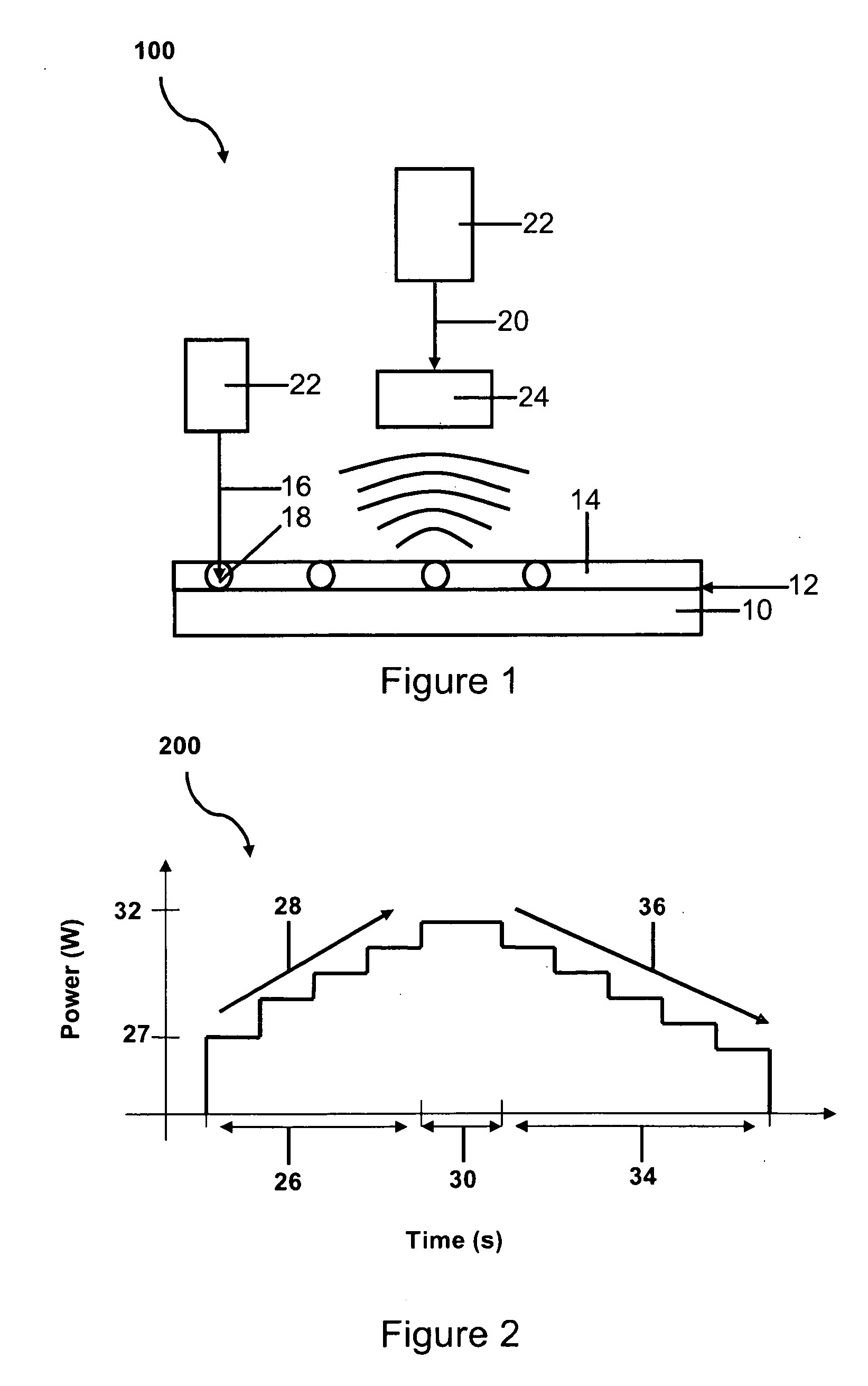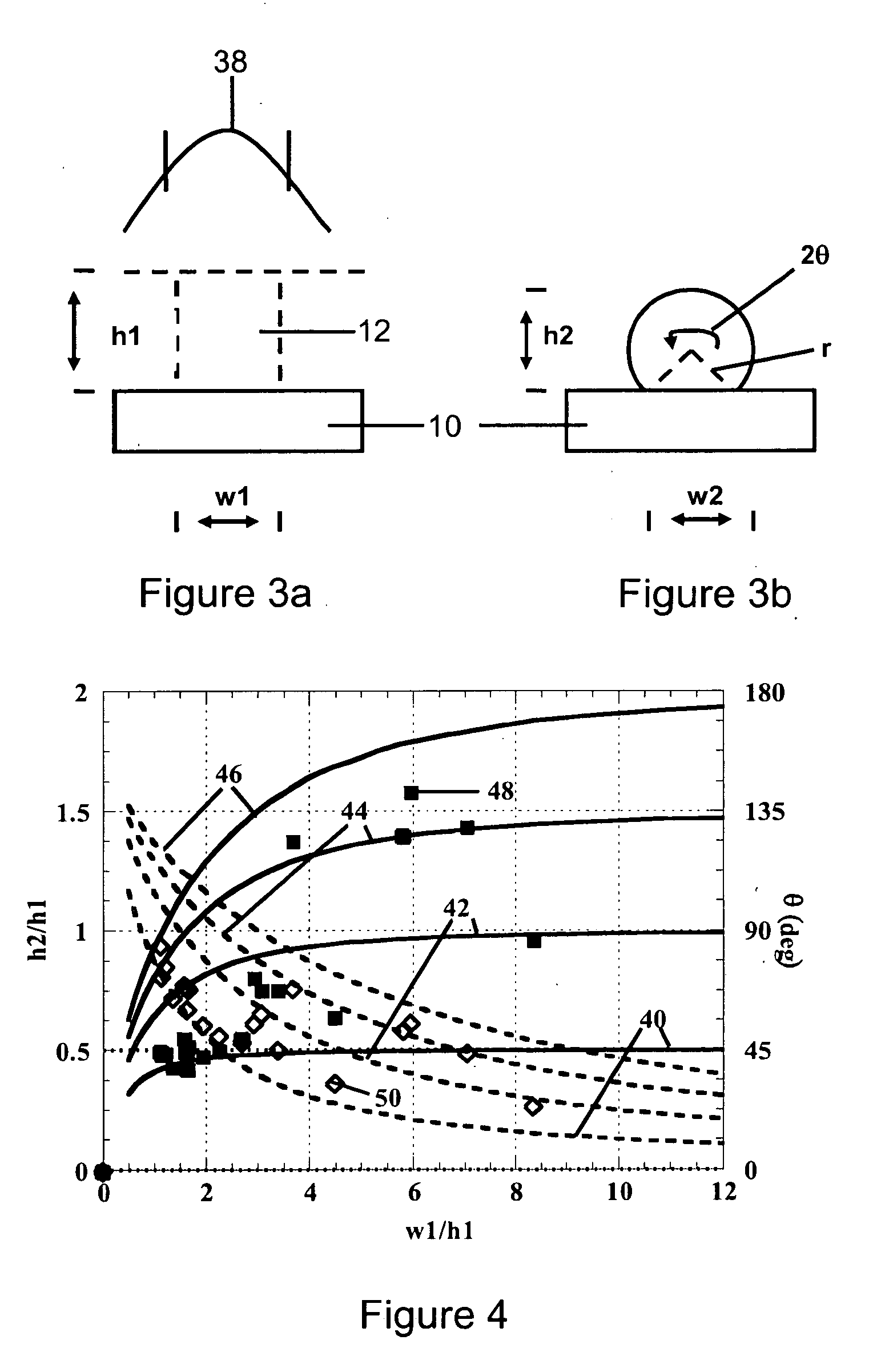Glass Bodies And Methods Of Making
a glass body and glass body technology, applied in glass making apparatus, glass tempering apparatus, manufacturing tools, etc., can solve the problems of damage to the microlens and incur an additional manufacturing cost, and achieve the effect of reducing the cost of microlens manufacturing, enhancing/customizing the control of glass body shaping, and minimizing post processing shaping
- Summary
- Abstract
- Description
- Claims
- Application Information
AI Technical Summary
Benefits of technology
Problems solved by technology
Method used
Image
Examples
examples
[0038]The following is an example of a method of making a glass body, according to one embodiment. A semiconductor laser array operating at 810 nm was connected to a fiber bundle as part of the INTEGRA laser system available from Coherent Inc. A lens arrangement was connected to the SubMiniature version A (SMA) connector of the laser with lenses with proper coating and optical focal lengths to provide a desired Gaussian beam shape or another beam shape of choice. The laser was incident on the cordierite powder that was disposed on the substrate. The cordierite powder was disposed in a layer having a uniform thickness. In this example, a mold was placed on a surface of the substrate. The mold was filled with cordierite powder and leveled using a putty knife. The substrate in this case was Corning 1737 glass, display glass, for example, Eagle 2000™ or soda-lime glass but other materials are also possible.
[0039]The cordierite powder used had particles with a distribution from 7 μm to 4...
PUM
| Property | Measurement | Unit |
|---|---|---|
| temperature | aaaaa | aaaaa |
| temperature | aaaaa | aaaaa |
| diameter | aaaaa | aaaaa |
Abstract
Description
Claims
Application Information
 Login to View More
Login to View More - R&D
- Intellectual Property
- Life Sciences
- Materials
- Tech Scout
- Unparalleled Data Quality
- Higher Quality Content
- 60% Fewer Hallucinations
Browse by: Latest US Patents, China's latest patents, Technical Efficacy Thesaurus, Application Domain, Technology Topic, Popular Technical Reports.
© 2025 PatSnap. All rights reserved.Legal|Privacy policy|Modern Slavery Act Transparency Statement|Sitemap|About US| Contact US: help@patsnap.com



